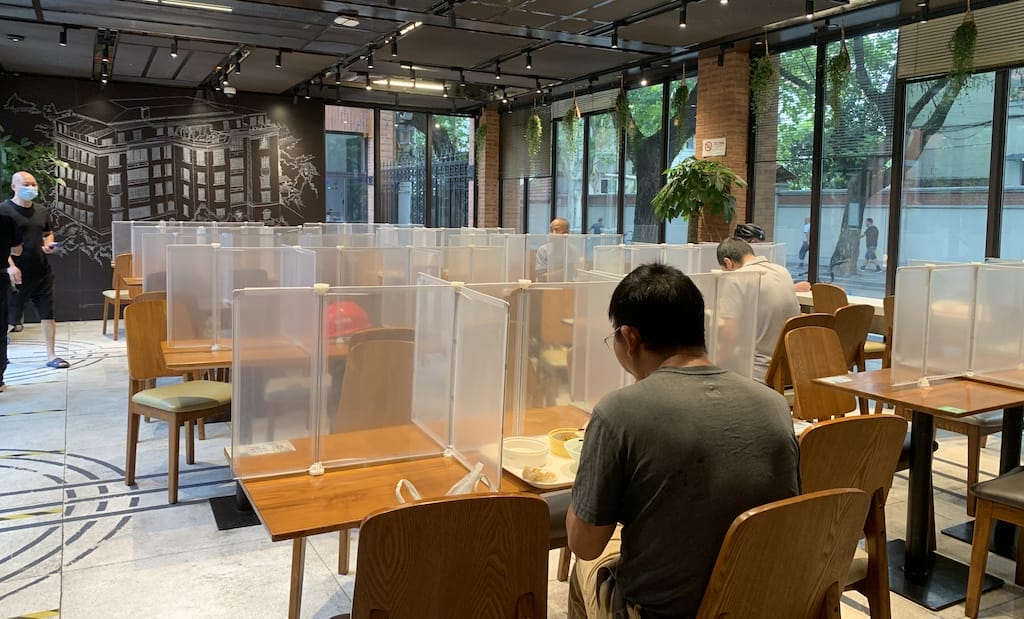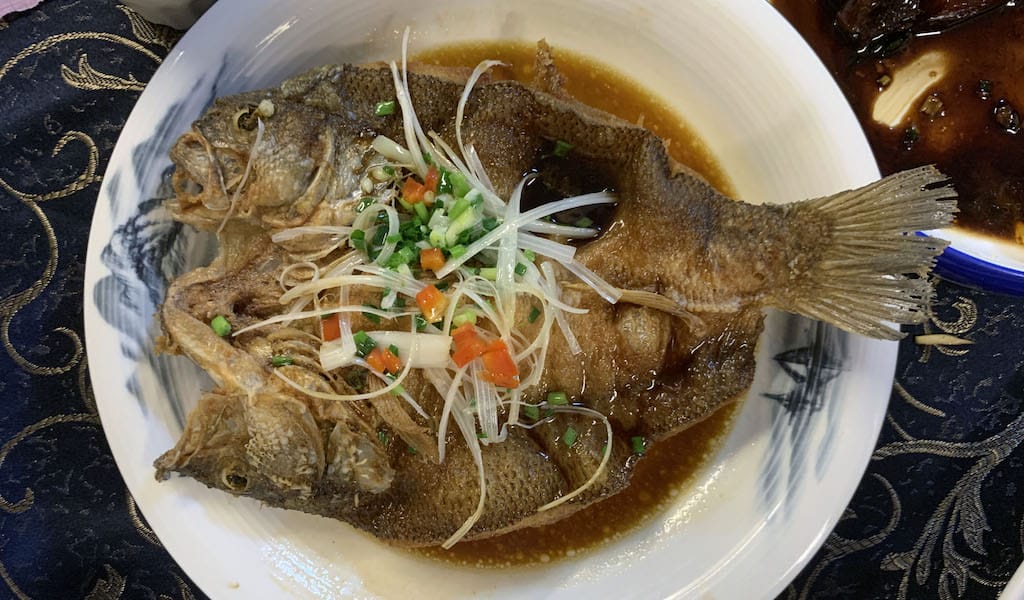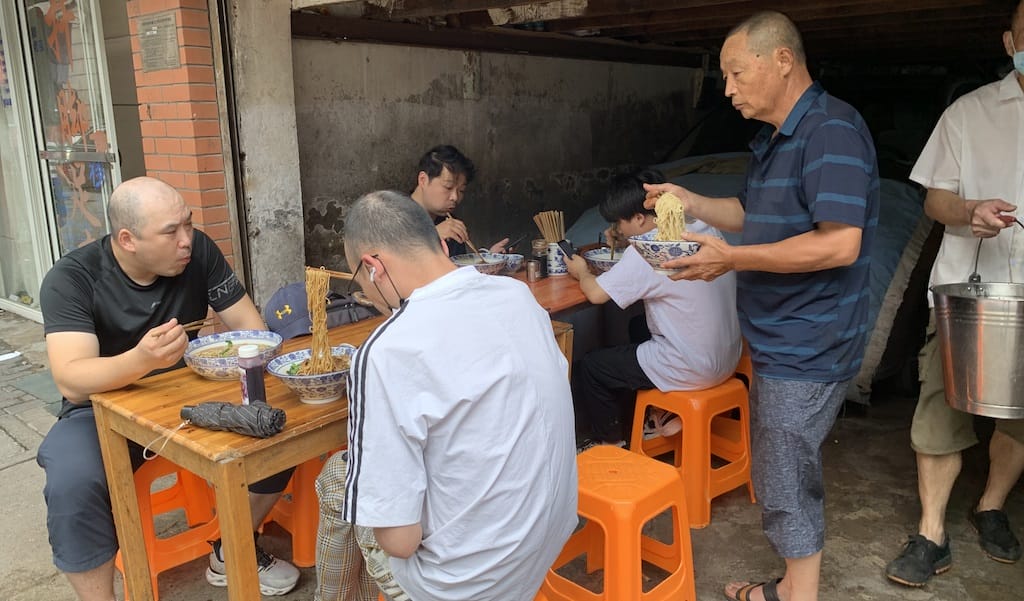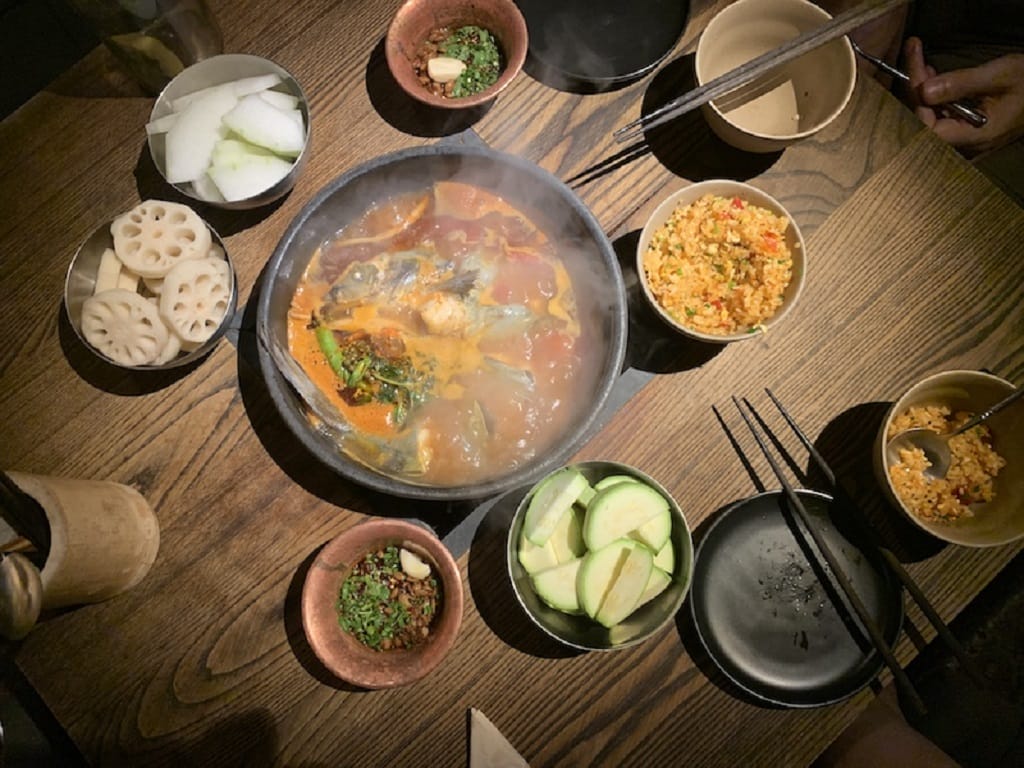In Shanghai, it’s not uncommon to see a queue for what can often turn out to be mediocre food. Restaurants, street food stands and milk tea stalls will even go so far as to hire “yellow bulls” (scalpers) to line up and create buzz for their products. So, it was with some suspicion we took notice of a line of people for weeks on end outside a community center around lunchtime. Curiosity got the best of us, and we discovered the hottest table in town: a subsidized canteen for elderly residents of the neighborhood – inside a heritage garden villa, no less.
In 1932, 66 Wutong Yard was as a parsonage for the Shanghai Community Church priests that was designed by the city’s most famous art deco architect, Lazlo Hudec. Its history since is vauge, but in September 2020, the location opened (with local sponsorship from the Xuhui government and Shanghai Rural Development Bank) as one of 18 community centers in the district designed to help seniors.
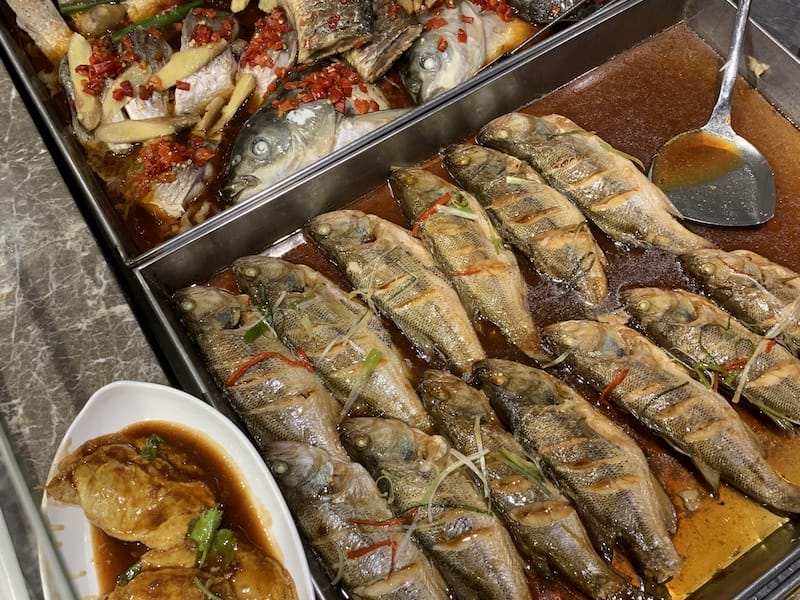
In addition to the canteen, the compound also includes a subsidized hair salon and the three-story former parsonage now houses a film-screening room, a library of vinyl records and books, and meeting rooms that are free for the local community to use. There’s also babysitting services, senior healthcare check-ups and pension plan info sessions – a one-stop shop for those retirees watching their grandkids while their grown children are at work. Also on the streetside of the complex is a Starbucks – because you just can’t beat globalization – though the local government has made a deal with the caffeine behemoth to employ differently-abled people and allow local college students to intern, as a way to give back to the community.
It’s the canteen food, however, that is the main draw at 66 Wutong Yard. But when word got out on how good (and cheap) it was, local demand from all generations spiked. There’s a new policy in place: from 10am-11:30am, diners must show a 上海敬老卡 (a senior card for residents over 65), assuring retirees get first dibs. This means that the popular dishes sell out early. Once the rest of us can enter, we queue up next to a handwritten blackboard outside the front door that announces the day’s specials – all in season, for peak flavor.

And there is still much on offer. The staff tells us that the flavors change slightly after 11:30am, with spicier dishes and fried foods added to the lot to appeal to younger office workers. The local senior Shanghainese community prefers healthy plates with benbang (home-style Shanghainese cuisine) flavors, they explained, with the occasional dish from outside the city limits comes from one of the “Eight Great Traditions” of Chinese cuisine – provincial cuisines that are celebrated as the “best” and most-gourmet of the different regional flavors.
When word got out on how good (and cheap) the canteen food was, local demand from all generations spiked.
We grab a tray and slide cafeteria-style down to the cash register, where payment is made via WeChat or Alipay for those under 60. Dishes are constantly in flux as fresh plates come out of the kitchen and favorites are quickly snagged. Up first is seafood. Usually on offer are whole yellow croaker or perch steamed with ginger and scallions, and fried prawns. Then there’s meat (red-braised pork, duck legs), veggies and tofu (usually more than 20 options changing based on seasonality) and, finally, rice. Diners point to the dishes they want, and servers hand single-size portions over the sneezeguard. We’ve yet to see a meat dish cost more than 20 RMB (US$3) and it’s not uncommon for some of the vegetable dishes to be as cheap as 3-5 RMB ($0.50-0.75).

And the flavors? Delicious. It’s like having a home-cooked meal by a talented nainai (granny). The queue moves fast thanks to an efficient kitchen, and there’s a real community feel to the spot as tables are shared and packed in tight to maximize space (though currently, with protective dividers up). Expect to be chatted up by your tablemates, especially if you’ve got a foreign face – we’ve met locals who’ve lived in the neighborhood more than 50 years and an ardent Buddhist currently studying to enter Berkeley’s Institute of Buddhist Studies.
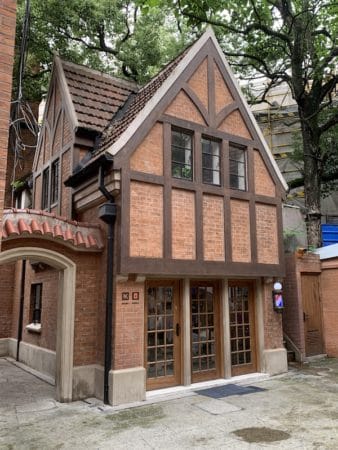
Dinner service is not as crowded, starting at 4:50pm and running through 7pm, while breakfast service has both a takeaway window for on-the-go snacks like baozi (steamed buns) and sesame balls. If you’re grabbing a bowl of zhou (congee, or rice porridge), you’re welcome to sit inside. In between meal services, the cafeteria hosts cultural events and workshops, like pingtan instrumental performances, Chinese opera and Shanghainese paper cutting.
 January 28, 2022 Enter the Tiger
January 28, 2022 Enter the Tiger
Almost every Chinese holiday comes paired with a festive dish. At Tomb-Sweeping […] Posted in Shanghai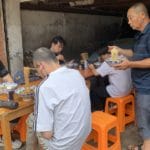 November 16, 2021 The Big Slurp
November 16, 2021 The Big Slurp
Looking for the best Shanghainese noodles, the city’s most slurpable strands? From hairy […] Posted in Shanghai October 12, 2021 Maolago
October 12, 2021 Maolago
Historically, Guizhou is one of China’s most overlooked provinces. The landlocked […] Posted in Shanghai
Published on September 10, 2021
Related stories
January 28, 2022
ShanghaiAlmost every Chinese holiday comes paired with a festive dish. At Tomb-Sweeping Festival, there are bright green qingtuan (glutinous rice dumplings) to celebrate the arrival of spring. During Dragon Boat festival, we have zongzi, stuffed sticky rice steamed in bamboo leaves, to commemorate the poet Qu Yuan. And during Mid-Autumn Festival, we chow down on…
November 16, 2021
ShanghaiLooking for the best Shanghainese noodles, the city’s most slurpable strands? From hairy crab specialists to the sesame sauce of your dreams, there’s something for everyone. Unlike the spicy strands of Sichuan or the pungent sauces of Dongbei, Shanghainese noodles, like the rest of the food native to the city, are characterized by the use…
October 12, 2021
ShanghaiHistorically, Guizhou is one of China’s most overlooked provinces. The landlocked location in central China is sandwiched between the famous spice havens of Sichuan and Chongqing to the north and Hunan to the East, and tucked behind the tourist destination of Yunnan to the west. It has the largest population of people in poverty and…







































